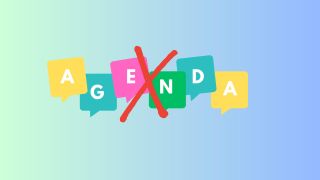KEY POINTS-
- Many people find it stressful to discuss diversity, political, and social justice topics.
- Scientific thinking can be used as a method for understanding emotionally charged topics.
- Scientific thinking causes one to reflect, look to data for insight, and reach scientific consensus.

Many people find it difficult to discuss diversity, politics, and social justice topics in classrooms and other forums.
This sentiment is rising, as reported by a Pew Research Center survey where six-in-ten U.S. adults (59 percent) found these conversations stressful, up from 50 percent in May 2019. With this trend, it is important to have a method for navigating such difficult conversations.
As a Harvard researcher and psychologist, I learned this the hard way when I brought the children of Holocaust survivors and the children of Nazis together for a series of conversations. I chronicled the results in my 2004 book Justice Matters (made into a documentary in 2006) and most recently in my 2020 book The Science of Diversity.
Similarly, I held conversations bringing together descendants of African American enslaved people and descendants of slaveholders. Together, these studies led me to develop a method of using scientific thinking to foster an environment of psychological safety.
Most diversity training programs assume that they can eliminate bias and prejudice by purging “wrong” beliefs about historical injustices, power differentials, race and gender differences, and so forth. This contentiousness of this approach has taken center stage in both political and private arenas.
For instance, former-President Trump ordered federal agencies to cease and desist from offering diversity training, noting that they “engender division and resentment within the Federal workforce.” Additionally, at least 25 states have considered mandates to limit how schools teach diversity. Proponents argue that diversity, equity, and inclusion programs promote a divisive and discriminatory "woke" agenda.
A review of the research on these programs shows that thousands in more than 50 years have been ineffectual in reducing people’s bias and prejudice. Telling people that they are biased and need to attend mandatory anti-bias training can make them feel forced to accept an authority’s agenda, and they may push back with the opposite to assert their autonomy.
Moreover, telling people to get rid of their biases is apt to fail when they are entwined with feelings on two sides of a historically sensitive issue. This was apparent in the aforementioned Harvard studies I conducted. Both sides of each group reported that they felt they had inherited a legacy that consumed large parts of their lives and identities with similar threads of feelings and associations with these legacies.
These studies also revealed important differences in their respective historical contexts. For example, children of Nazis reported their parents told them stories about the war, whereas children of survivors reported their parents told them stories about the Holocaust. The daughter of a survivor put it like this:
I didn’t even know there was a war until I was a teenager. I didn’t even know fifty million people were killed during the war. I thought just six million Jews were killed. The stories I heard were always about taking the Jews to concentration camps. For my whole childhood I think I thought it was only the Jews who were killed. That it was just Nazis killing Jews. It wasn’t until some history class that I realized this was a major war. But you know, still I think the Jews had it the worse, they suffered the most because every Jew was a victim like someone said (Weissmark, 2020, p.219).
The daughter of a Nazi officer put it like this:
I didn’t know about the concentration camps until I was in my teens. First, I heard about the party. Then I heard stories about the war, about bombs falling or about not having food. I would hear that my father was an officer in the army, and I remember seeing pictures of him in uniform. And I remember his black shiny boots. And I saw a picture of him on a horse. At first, I remember feeling proud to find out my father was an officer in the army (Weissmark, 2020, p. 219–220).
By providing an environment in which both sides could openly express their experiences, these historically opposed groups were able to understand that there was a sense of double victimhood. Without such an environment, this phenomenon would have prevented the progression that led to common threads of understanding.
Finding Common Threads of Understanding
The need to find common threads of understanding is growing in our current climate of civil discourse and racial reckoning. Many people don’t feel safe to share their viewpoints without reprisal, which reflects the discomfort many have with the current widespread cancel culture. Diversity and racial sensitivity programs aimed at exposing and curing biases and prejudices are unlikely to create a culture of inclusion where nuanced meaningful conversations can take place.
Given these constraints, it is natural to ask, “Is there anything we can do? Are there any solutions we can live with?”
The quick answer is yes. The solution requires facilitated conversations, in which people learn how to scientifically reason together, even when in stark disagreement. The environment I created in my previous studies provided the foundation for the scientific thinking methodology I use in my classrooms today. Over the years, thousands of students have joined me to reason scientifically about some of the most important polarizing topics we face, including racial justice, police bias, white privilege, immigration, BLM, and reparations.
Scientific Thinking
People do not always think of scientific thinking as a path to understanding in emotionally charged conflicts. However, the nature of scientific thinking causes one to pause, reflect, look to data for insight, and reach scientific consensus.
When teaching the Psychology of Diversity course recently, one of my students expressed the view that racism has long been the cause of rampant police brutality. In response, another student suggested that police brutality, regardless of race, may be a more pressing issue.
We can imagine how an exchange beginning in this manner might unravel into an emotional debate and end in a deadlock and see how little progress would be made had another student expressed the view that police brutality was not an issue at all. However, as a facilitator using the scientific method, I encouraged them to ask, “What does the data say about the relationship between race and police brutality? What other factors contribute to the nexus between the two?” (Weissmark, 2020).
Then the class was tasked with finding peer-reviewed scientific journal articles on this issue with conflicting findings. In this way, students were encouraged to seek out information without an agenda. This allowed us to problem solve together by asking, “Why do these studies come to opposite conclusions? What data collection and analysis approaches were used? What other factors could play a role in the discrepancy?” (Weissmark, 2020).
From there, the conversation opened up, and we could then ask more difficult questions such as, “What effect does taking race out of the conversation on police brutality have on a person who has experienced racism? What effect does placing race as the central cause of police brutality have on a person who has experienced such brutality without race being a factor?” (Weissmark, 2020).
Scientific thinking does not take emotion out of the conversation. Instead, we pause and reflect on what effect our emotions have on the conversation’s progression. This is what tends to go missing when we discuss polarizing topics, but it is also what I have found to be imperative that we leave in. It is a powerful way to recognize our blind spots and transform them into facilitators rather than obstacles.
This method is dialectic between persons holding different hypotheses about a topic but wishing to understand one another and test their views. One does not expect to “win” a debate or persuade the other to change or think differently. Rather, this teaches us to accept that more than one view can be hypothetically true at once.
In this way, scientific thinking can bolster American education as a method for evaluating polarized views, fake news, misinformation, and disinformation. Whereas agenda-driven diversity training programs often use shame and pressure with the aim of persuading others to share one’s “right” view, scientific thinking creates a space to freely express and explore differing views.
Scientific thinking does not rely on political conviction or personal opinion, but instead on methods of empirical research, where all opinions are viewed as hypotheses to be tested, rather than as appeals to emotion. This method dissolves differences by asking people to consider all the data, ask each other questions about what the data mean, and reach a consensus about what is and is not agreed on.
They then have the foundation to collaborate and explore how to test the questions about the points on which they disagree. The process of the scientific thinking method is based on finding out what is true, and not, “What can I prove and convince you of?”
This method changes the dynamic of conversations from one of divisiveness to one of connectedness, thereby making it possible to have a real, inclusive conversation that includes different viewpoints. That is why it is so vital to learn how to harness scientific thinking as a method for creating agenda-free conversations.


